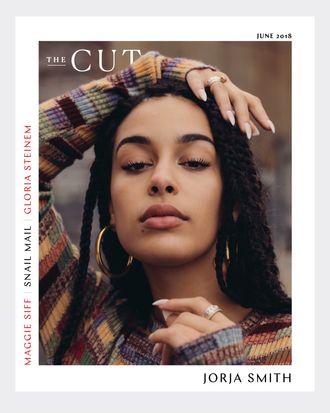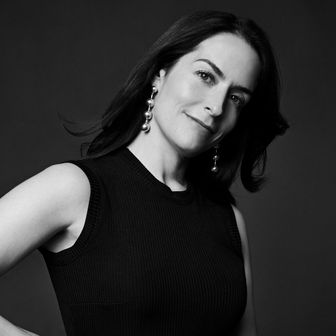
Recently a Cut fashion story sparked a small conversation on Twitter. It was a piece by one of our editors about how she wanted a high-necked, ruffled, below-the-knee “prairie dress.” This seemed innocuous enough — prairie dresses, though certainly not a look that everybody likes, are widely available this summer. Lindsay, who wrote the story, expressed her love for the trend and found a bunch of options for people who might also want to buy them.
We should have known better, because fundamentalist-Mormon-type cotton dresses are one of those divisive fashion items that Balkanize the internet. (Remember how mad that $400 Creatures of Comfort dress made the women of Twitter? So mad!) Not long after we put up the story, a tweet from writer Amanda Mull caught our attention. It dismissed prairie dresses as “skinny privilege,” and accused people who wore them of looking like “jackasses.”
Maybe this sounds insane, but I do appreciate the immediate feedback you get from online publishing. For me, it’s what makes the whole endeavor feel so dynamic: We don’t just put out Vreeland-style missives to a mute audience and expect them to accept our final word on style. We get to hear what people think. The prairie-dress critique made me feel like it might be time to explain the way the Cut thinks about fashion. Even though we talk about this a lot in the office, we’ve never really bothered to articulate it explicitly for the rest of the world.
Lindsay’s initial draft had included a few lines about how she’d hesitated to wear dresses like this because she’s five-foot-two and a size 8 — she wanted to emphasize that she wasn’t some tall, lithe model preaching an unattainable style. We wound up cutting those lines because we worried they implied that the Cut thought size determined who should wear what. Really, our fashion ethos is something more like this: There are no rules. Skinny people are not more entitled than heavier people to wear a particular style. If you feel great in a caftan, wear a caftan. If you love crop-tops, wear those. Fashion goes beyond what’s “flattering” — more often than not, “flattering” is boring. Wear whatever you like, whenever you like, and never let anybody tell you that you don’t deserve to participate because of your size, gender, age, or economic status. Also, we don’t think there is a correct way to dress. No one should ever call you a “jackass” for trying a new look. Life is short — take some risks. Or don’t. Whatever. Let me fashion in peace.
Still, as much as I reject the critique of “skinny privilege” in the case of prairie dresses, I do recognize how alienating fashion can be when it comes to size and bodies. Combatting that is no small task, and reality often falls short of our ideals here at the Cut. A few days before the prairie-dress story, we’d published a post about the new Everlane wrap dress. A self-selecting group on our staff had been eager to try it out, and in our enthusiasm, we didn’t stop to consider that we hadn’t represented sizes over 12. When Helen Rosner, a writer at The New Yorker, tweeted her irritation at the article, I realized she had a point. If one of the things we truly think is that fashion is for anyone, we need to make sure that comes through in the images and perspectives we publish. The images especially can be hard to control, since many of the photos we run are provided by the clothing companies we feature. (For example, even though the prairie dress story included options in sizes over 14, the overall tone was set by the skinny model at the top.) It’s a challenge, but it’s worth trying harder to do better.
Talking about weight and the way our bodies feel in our clothes can seem like a losing proposition. You’re bound to offend, and it’s all so deeply personal that consensus is almost impossible; one person’s “fat” is another person’s “skinny.” And whatever your ideals, weight is so much a part of how the world judges us that it’s hard not to think about it all the time. This is a minefield and we’re all getting dressed in it.
Between Crohn’s disease, pregnancy, and a love of second helpings, I’ve been a lot of sizes in my life. I’ve been close to 100 pounds and I’ve been close to 200 pounds. These days I strive to stay somewhere in between. My weight has been in my control sometimes and other times not, but for me, being “skinny” has only ever been associated with being very sick. According to every doctor I’ve ever seen when I was healthy, I’ve always been slightly heavier than I was “supposed” to be for my height. When I was 11, my doctor told me I was “five pounds too heavy.” I recall literally thinking, Asshole. When I was 39, my life-insurance policy physical indicated that my BMI made me “a risk.” I was 141 pounds and feeling totally great. I’m now paying more for my extra five pounds.
Still, I am acutely aware that much of the fashion world thinks I’m too fat. I’ve gone years where I couldn’t shop in my favorite stores because the largest size they stocked was a 10. I grew up in an era of women’s media where there was only one message: Be thinner. I cannot get over how much better it feels now to scroll through Instagram and follow people like Paloma Elsesser who are deeply cool and don’t apologize for liking food and Céline in equal measure. Which is pretty much how we feel about fashion here, too: Designers should accommodate the women and not the other way around. We can’t fix how anybody feels about their body, but we can disabuse you of the idea that certain styles are only for certain people.
Enjoy June.
Love,
Stella





